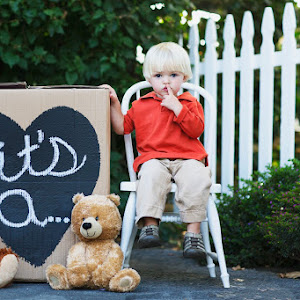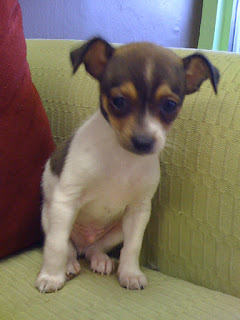Photography is an art; It captures a moment in time forever stuck on pause. Some are happy moments or happy places; while others are moments in history to forever be remembered for any number of reasons. Growing up, as a part-time daughter to a Grip in the movie industry, I have always had an affinity for photography. I will never forget how it felt walking around the sets as a child, watching the photographers who lingered. They were almost unseen some moments, capturing scenes of a production that may one day become an iconic piece of theatrical history, or documenting an incredible duo working together behind scene. I decided, after I married my husband, that I wanted to pursue this hobby as a career. Little did I know of the vast world of terminology that follows a photographer and its complex and ever-changing environment. With the onset of new technologically advanced equipment, new methods of capturing subjects, and untrained “professionals” soliciting advice surfacing every day, it is difficult to ask the right questions and obtain an accurate answer. Here are a few words that showed up regularly in my pursuit of knowledge into the field of photography.
My absolute favorite and one of the most commonly used words in photography is, exposure. This word can be used to describe so many aspects of photography, from how a subject or scenery appears to explaining the emotion said image conveys. Exposures base word expose per the Oxford English Dictionary, carries the meaning "to put out; to deprive of shelter" (definition 1), adapted to the English language from the French word exposer, which originated from Latin roots. Exposure alone, defined according to the OED, introduced to the English language and first appeared in the use around the 1600s, means "the action of exposing; the fact or state of being exposed" (definition 1). For photographers, this word is widely used to describe the process of light allowed to reach light-sensitive materials within the body of the camera, in order to create the desired image. Many things are put into play when creating an exposure; such as shutter speed, ISO (International Organization for Standardization), and F-Stop (setting of the lens diaphragm, indicating the size of the aperture relative to the focal length of the lens). The beauty of exposure in photography is that it is not a science, it is a practice, and no exposure is truly right or wrong. With practice and knowledge of an individuals equipment, anyone can capture a moment, exactly as they visualize it. According to Tom Ang, in Fundamentals of Photography, "the relationship between light and exposure is perhaps the most fundamental in all photography" (48). The more a photographer understand exposure the easier it will be to capture a vision as it is perceived.
One of the newer words to arrive into the ever-changing world of photography, thanks to our newer digital way of capturing subjects, is raw. When I first heard this word I immediately associated it with raw meat. According to OED the word raw, which originates from Germanic, meaning "uncooked; unprocessed, unrefined," is used differently, yet has almost the same implication amongst photographers (definition 1). Digital photographers use this term to describe images that contain minimal processing. As Ang instructs, "raw files must be processed before use, but can give the best image quality the camera is capable of" (342). It differs from a JPEG, in that with a JPEG some original image data is lost due to compression. Whenever a photographer wants to digitally enhance images or add effects raw is the format they would want to keep images in while doing so, at least until completely satisfied with the way it appears.
Another word that seems to be gaining popularity, mainly due to our society's love for all things vintage, is analogue. Per the OED, analogue was first found in English text used to describe the "technical senses," of the term (definition 1). J. Parkinson, in Org. Remains Former World (II. xi. 91) observes, "Whilst treating of the fossil corals, many were pointed out, whose recent analogues were positively not as yet known." The word having multiple origins from French and Greek languages, introduced into the French language in 1787, holds a different meaning for photographers. They have begun using this term as a fancy description for antiquated traditional film photography; analogue or non-digital media, verses digital media. The beauty in traditional film photography or analog, as it is now being referred to, comes from within the camera equipment itself; the unintended occurrences of light leaks, blank shots, and happy accidents, which are normal with the first few rolls of film.
One of the most overly used words in photography is "shoot," shooting, shot. Using the basic “shoot” to describe why each of these words is all wrong, and so very disturbing when addressing a potential subject or client. Per the OED, the oldest written record of the word shoot found in the English language was found in verb form, put into use sometime in the early 1000s coming from strong Germanic roots, carried the meaning "to go swiftly and suddenly," giving an example, "to fly as an arrow from a bow" (definition 1). Later found applied to meteors in 1290, with an explanation, "of ‘star’ or meteor: To dart across the sky" (definition 1, b). Followed by the application of the use in 1693 with light, "Of light, etc.: To be emitted in rays, to dart" (definition 1, c). Following a trend here? Shoot, used as a noun, defined per the OED is, "an act of shooting (with firearms, a bow, etc.); a discharge of arrows, bullets" (definition 1, a). Potential clients would prefer that no one be "shooting" at them during a session or moment. There are plenty of other words that can be used to describe the action of photographing someone's memories, like capture for example.
Bokeh, pronounced "bo-keh," is another popular, but sometimes-misunderstood and misused photography term. Borrowed from a Japanese word “boke,” commonly used to describe someone who is not thinking right or making silly mistakes, and could be loosely translated as fuzziness or confusion. Photographers have now adapted this word for another purpose, according to the Merriam-Webster dictionary, it carries a meaning of "the blurred quality or effect seen in the out-of-focus portion of a photograph, taken with a narrow depth-of-field." (definition 1). Since its introduction into photography, there have been many debates as to the correct usage of the word bokeh. Some photographers prefer to use a more technical definition of the word bokeh, which, as stated above, describes how the lens renders all of the out-of-focus points of light, while others will argue that bokeh only refers to the quality or fuzziness of the circular light sources and reflections in the out-of-focus area. It is a matter of opinion at this point, but looking at the technical term for it, I would have to say that I agree on the point that it refers to the quality of the entire blurred area of an image.
As a professional photographer I often get asked all sorts of random questions. Some are truly ridiculous, while others are a desperate attempt for accurate information. In our fast paced, technologically driven society, it’s hard for those without formal training to obtain authentic knowledge on the subject and its long list of terminology and equipment. Along with its ever-growing popularity, due to said technological advancements, many people are often misinformed on proper terminology or improperly trained in their equipment and technique. I am hoping the few words described above will help to clarify a few key terms used in photography today, to assist others in their pursuit of photographic art even if just a few basic terms.
"Analogue." Definition 1, noun. Oxford English Dictionary Online, Oxford, June 2017,
www.oed.com /view/Entry/7029. Accessed 30 October 2017.
Ang, Tom. Fundamentals of Photography. Alfred A. Knopf. New York, 2009.
Accessed 30 October 2017.
Entry/66704. Accessed 28 November 2017.
"Exposure, n." Oxford English Dictionary Online, Oxford, June 2017,
www.oed.com/view/Entry/66730. Accessed 30 October 2017.
"Raw, adj. and n.1." Oxford English Dictionary Online, Oxford, June 2017,
"Shoot, n.1." Oxford English Dictionary Online, Oxford, June 2017,
www.oed.com/view/Entry/178498. Accessed 30 October 2017.




















